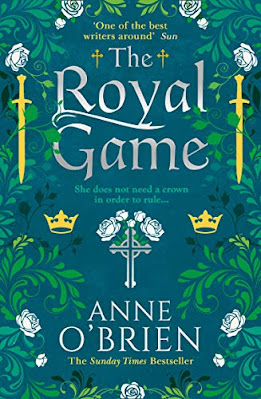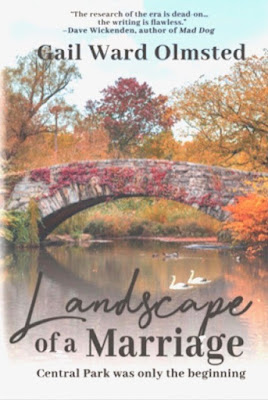It is 1769 and these are violent times. London’s Covent Garden has long been a centre of hedonistic pleasure with its whores and harridans, aristocrats and artisans, actors, drunks, and thieves.
Prostitute, Kitty Ives, takes a man to her bed and wakes to find him dead. Fearing the gallows, so begins Kitty's quest to uncover
the identity of the murderer.
Visit Covent Garden today and you are surrounded not only by history but also by tourists intent on pleasure. From chic eateries to Opera House, boutiques to flagship Apple store, clubs to coffee shops, this magnificent square has long been a hedonist’s dream destination. Built as a 16th century aristocratic Italianate piazza, by the mid-17th century the nobility had moved to pastures new.
Over time, the magnificent houses became places of trade. Prostitutes of every description lingered beneath the porticos, danced in the inns, sported themselves in bagnios, brothels and Turkish hummums. They formed a ‘whores’ club and they were listed on Jack Harris’s Guide to Covent Garden Ladies. One street to the East of Covent Garden, the Magistrates’ court played host to the foremost detective agency in the land: Sir Henry Fielding’s Bow Street Runners paved the way for the Metropolitan Police service in this, the most vice-ridden area of London. Fielding called it the ‘Square of Venus’.
Fascinated by its history, Covent Garden became the setting for my book The Finish. Intrigued by the idea of a prostitute who wakes to find a man dead in her bed, I decided to explore what might happen to her. I’d already written about Drury Lane’s Theatre Royal for the then owners, Stoll Moss, and I’d scripted a TV series about the ghost hunting exploits of Samuel Johnson and James Boswell.
It seemed like the most natural thing in the world to continue my 18th century detective work. Research has always been the backbone of my work, both in TV and film and with my novels. So it was I entered the somewhat seedy world of Kitty Ives.
When Sir Henry Fielding died in 1754, his blind brother, Sir John took over as head of the Bow Street Runners. Covent Garden’s glory days were over. Now the aristocrats mostly took their pleasure in Soho or St. James. By the end of the 18th century, they were travelling even further - to newly built Marylebone. Although Covent Garden’s hay-day had passed, there were still brothels aplenty.
The Hummums Turkish bath, in the Little Piazza, still welcomed the unwashed gentry. The Shakespeare’s Head still played host to Jack Harris and his harem. The Covent Garden Theatre (now the Opera House) and the Theatre Royal Drury Lane (today, in its fourth incarnation) still drew crowds. Covent Garden was by no means dead. It had just become a seedy neighbourhood, down-at-heel, and treacherous.
Dan Cruickshank states in his book The Secret History of Georgian London that a staggering one in five women living in London during the 18th century were prostitutes. Given that the population ranged from seven hundred and fifty thousand, mid-century, to one million souls at the turn of the 19th century, Cruickshank’s figures, on first consideration, seem rather high.
Elsewhere the statistics appear more realistic. The Universal Daily Register, published in 1786, suggested that one sixth of the population lived off the proceeds of thievery and whoring, whilst the German traveller, Johann Wilhelm Von Archenholz, claimed that fifty thousand prostitutes occupied London.
Covent Garden’s licentious reputation grew on the back of bawds such as Mother Needham, who gained notoriety for providing the very best ‘gentry morts’ to a clientele of such a high standing, she could count Dukes and Earls amongst her patrons. When the bawd of renowned prostitute Sally Salisbury died, she gave her services to Needham’s stable.
Here, older whores procured from other establishments, combined with a continual influx of sweet young girls, fresh from the country and free from disease, meant customers were never short on choice. It was a commonly held belief that a young virgin could cure syphilis. A disturbing report, made by Michael Ryan in 1839, claimed that around 400 people made their living by kidnapping children to feed the common desire for child sex partners. Sad to say, as fast as the pretty young things were snapped up by avaricious bawds, they aged and died. A whore’s life was short.
Few reached their thirties. There no cure for ‘dripper’ or the ‘French pox’, other than to take mercury. Men of course, were not considered the repository of such diseases. It was all the women’s fault. Foreigners to our shores called English women ‘foul and fetid under cover’ (Lobcock 1795, p.94), and with this description, and the end of the 18th century, Covent Garden’s hay-day waned.
In truth, few women were really top-class courtesans. They were more likely to be lowly sorts, much given to drink. Gin was a particular craze. They were less frequently addicted to opium, which was traded in China by the East India Company in exchange for tea. Many London whores were educated country girls, enticed into the trade by promises of money and fine clothes.
Just as girls are trafficked today across international borders, only to end up as sex slaves with no hope of escape, so in the 18th century prostitutes could do little to break away from their tawdry lives. Few women avoided the control of their ‘beardsplitter’, who gave a roof and food with one hand, whilst taking away the means to independence with the other.
It can be argued that even the those whores of highest renown relied on the income they had from being ‘kept women’, and that even though they appeared to be free agents, their escape came by way of an early death, or marriage. The much celebrated Sally Salisbury, for instance, was imprisoned for stabbing a man, and died of syphilis whilst in Newgate prison. The idea that these women retain their independence by whoring is naught but a fiction.
As to the criminal aspects of prostitution in the 18th century, whilst there were laws against keeping a disorderly house, few bawds were charged. Streetwalkers suffered arrest for theft more frequently than they did for solicitation. Sir John Fielding had given the men in his charge power to apprehend whores, and had the backing of laws passed mid-century, but more frequently than not they simply maintained the status quo.
This led to accusations that the Bow Street Runners operated ‘protection rackets’. Complaints were more often laid at the door of those policing the streets, than that of the trouble-makers. Not that anyone really ‘policed’ 18th century London. Prosecutions were brought, not by the Crown Prosecution Service, as is the case now, but by the victim of a crime, or, in the case of a murder, by someone with a close association to the victim. The early Bow Street Runners had been recruited from the ranks of ‘thief-takers’; they were essentially, professional thugs.
As the century progressed so what came to be known as the ‘Bloody Code’ intensified. You could be sent to the gallows for as little an offence as stealing bread. If you were transported to America, but escaped back to England, you were hanged on recapture. Interestingly, Sir John Fielding spoke against whores on the one hand, whilst turning his blind eyes away on the other. For all the ‘Bloody Code’, crime was fast spiralling out of control. It would take until 1829, and the establishment of the Metropolitan Police Force, to see any real control over the lawlessness of the larcenous and licentious Londoners.
Angela Elliott
# # #
About the Author
Angela Elliott is a scriptwriter, producer and author. Having won a BBC Radio writing competition in 1990, Angela contributed to the BBC Global Concerns programme before moving into documentaries and film with Stanley Kubrick assistant Norrie Maclaren at Tartan Television and Plantagenet Films. With Norrie, Angela originated, researched, and created over 30 documentaries and originated and scripted feature length films and dramas. She wrote with Director Lewis Gilbert's son, John Gilbert, and in association with actor Stewart Bevan and subsequently for Producer Bernie Williams. Angela now works in conjunction with fellow producers to develop projects for TV and film at Londonshire Films Ltd. She is the author of four novels, including "Some Strange Scent of Death" featured on the Discovery Channels "Unexplained" series, The Finish, The Remaining Voice, and The Nine Lives of Antoine Montvoisin. Find out more at
www.londonshirefilms.com and follow Angela on Twitter
@anjgi






























